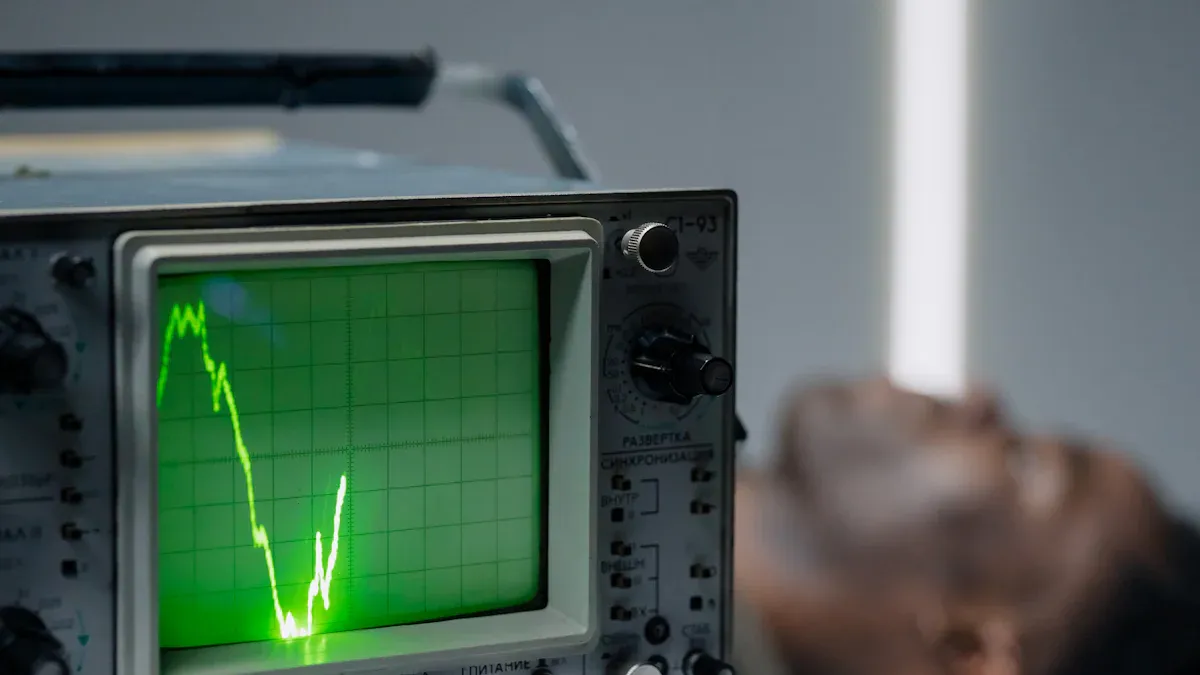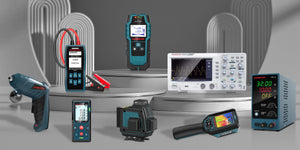3 Big Reasons a Hanmatek Oscilloscope Beats a Voltmeter

When working with electronics, choosing the right tool makes all the difference. A voltmeter is great for simple checks, but sometimes it just isn’t enough. That’s where a Hanmatek digital oscilloscope stands out:
- See real-time waveforms, not just numbers.
- Catch fast signal changes, spotting issues instantly.
- Get a clear view of glitches and noise that voltmeters often miss.
With a Hanmatek oscilloscope, troubleshooting becomes faster, more visual, and more reliable—whether you’re repairing audio gear, digital circuits, or industrial electronics.
Key Takeaways
- An oscilloscope shows waveforms over time, while a voltmeter only shows one value.
- Hanmatek oscilloscopes capture fast glitches and intermittent faults.
- High bandwidth makes them ideal for digital circuits and audio troubleshooting.
- Freeze and analyze unusual events for accurate diagnostics.
- For static checks, use a voltmeter. For complex work, choose an oscilloscope.
1. Signal Display

Waveform Visualization
With a Hanmatek oscilloscope, electrical signals come alive on screen. You don’t just see a number—you see the voltage move over time. This makes it easy to identify amplitude, frequency, shape, and disturbances.
Tip: Troubleshooting a guitar pedal or speaker? A waveform view shows distortion or noise instantly.
Numeric Readout
A voltmeter provides one number at a time. Perfect for checking batteries or static voltage, but it cannot show fast transitions or complex waveforms.
| Feature | Hanmatek Oscilloscope | Voltmeter |
|---|---|---|
| Signal Display | Graphs voltage over time | Single value |
| Detects Fast Changes | Yes | No |
| Finds Glitches/Noise | Yes | No |
| Best For | Dynamic signals, troubleshooting | Static voltage checks |
2. Time-Based Measurement
Capturing Fast Changes
Signals can change in microseconds. A voltmeter misses them. Hanmatek oscilloscopes sample signals millions of times per second, letting you spot glitches, bursts, or drops instantly.
- Digital pulses
- Microcontroller clock signals
- Audio pops & clicks
- Power supply surges
Bandwidth
Bandwidth defines how fast a signal your scope can measure. Hanmatek oscilloscopes range from 25 MHz entry-level models to higher bandwidths for advanced work.
3. Troubleshooting Complex Circuits
Finding Glitches
Hanmatek scopes feature trigger functions that freeze waveforms the moment an error occurs—making intermittent faults easy to diagnose.
Diagnosing Noise
Noise can distort signals. A voltmeter ignores it, but Hanmatek oscilloscopes let you zoom, capture, and analyze in detail—helping you fix the root cause.
4. Oscilloscope vs. Voltmeter Comparison
| Feature | Voltmeter | Hanmatek Oscilloscope |
|---|---|---|
| Accuracy | High (±0.15%) | Moderate (±1.5%) |
| Speed | Slow | Fast, real-time |
| Visualization | Numeric only | Waveform graph |
| Bandwidth | ≤100 kHz | 25 MHz – 200+ MHz |
| Glitch Detection | No | Yes |
| Connectivity | Basic | USB / LAN / Advanced |
Tip: Use a voltmeter for basic checks. Use a Hanmatek oscilloscope when you need deeper insights.
FAQ
What can you see on an oscilloscope that you can’t with a voltmeter?
Waveforms, glitches, and noise. A voltmeter only shows a number.
Do you need training to use an oscilloscope?
No. Hanmatek oscilloscopes are beginner-friendly with intuitive menus.
Can I use an oscilloscope for car or home repairs?
Yes—ideal for sensors, audio gear, and power troubleshooting.
Why do signals look noisy?
Noise or interference in your circuit. With a Hanmatek scope, you can identify and fix it faster.
Conclusion: Use a voltmeter for simple checks, but for real-time insights, precision, and advanced troubleshooting, a Hanmatek Oscilloscope is your best choice.





Leave a comment